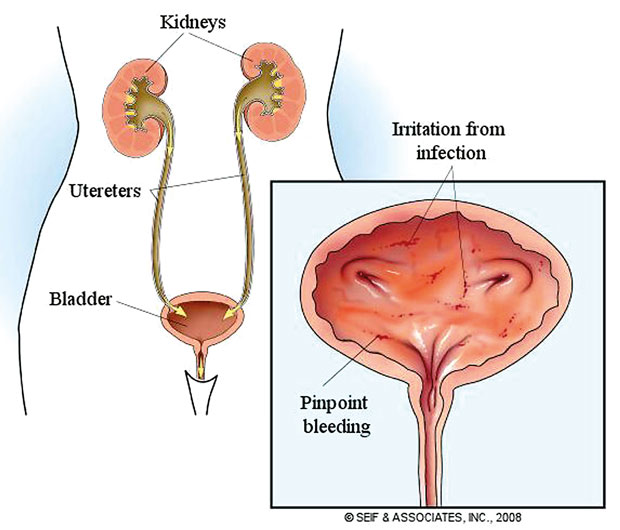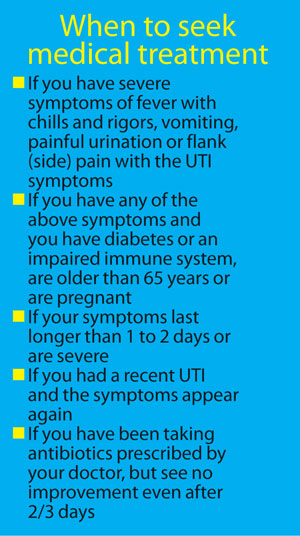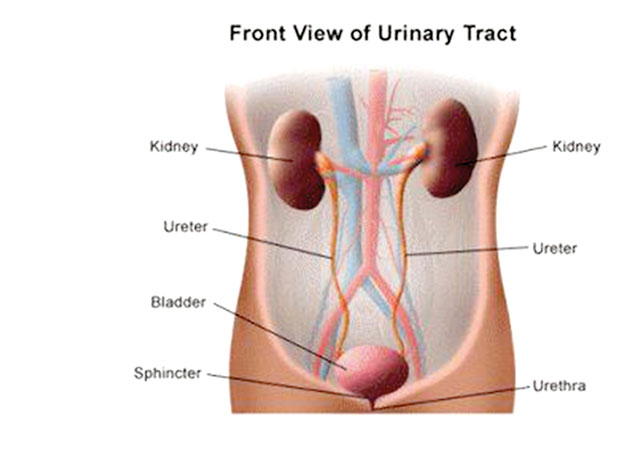02 Aug 2017 - {{hitsCtrl.values.hits}}

 The urinary system is the body’s principle pathway of getting rid of the waste and certain components like ions and drugs that are present in the blood in excess amount. When the blood supplied to the kidney goes through the minuscule nephrons-the functional units of the kidney- blood is filtered into it. This is the process of producing urine. Some components (eg water, sodium) are reabsorbed into blood, while some (eg; ammonia, certain drugs) are secreted, forming the constituents of urine. The body has the ability to change the components of urine according to the circumstances, aiding the survival process. For an example, when a person is dehydrated, the body will produce a low volume of more concentrated urine, preserving the body’s precious water supply. The reverse will happen when you drink plenty of water. This increases the volume, causing you to increase the number of trips to the toilet.
The urinary system is the body’s principle pathway of getting rid of the waste and certain components like ions and drugs that are present in the blood in excess amount. When the blood supplied to the kidney goes through the minuscule nephrons-the functional units of the kidney- blood is filtered into it. This is the process of producing urine. Some components (eg water, sodium) are reabsorbed into blood, while some (eg; ammonia, certain drugs) are secreted, forming the constituents of urine. The body has the ability to change the components of urine according to the circumstances, aiding the survival process. For an example, when a person is dehydrated, the body will produce a low volume of more concentrated urine, preserving the body’s precious water supply. The reverse will happen when you drink plenty of water. This increases the volume, causing you to increase the number of trips to the toilet.

As is the case with the other systems of the body, infections can affect the urinary system also. Urinary Tract Infections (UTI) are divided into upper and lower UTI. Upper ones are the infections in the kidneys (Pyelonephritis) and infections in the ureters, (though those are extremely rare). Lower UTI’s are the infections in the bladder (cystitis) and infections in the urethra (urethritis). We’ll be focusing more on lower UTI in this article because they are more common.
During any infection in any part of the body, a pathogen enters the system and multiplies. This causes the symptoms to develop. It can enter the specific system either through an orifice; in this case the urethra or through blood. It enters the urinary system and multiplies there, causing the symptoms to appear. But there are many protective mechanisms to prevent a pathogen from reaching its target, like the protective epithelium of the urethra and the body’s immune reactions. A pathogen has to pass through all these barriers to ultimately cause the infection in our body.
Symptoms of a lower UTI usually includes pain while passing urine, gives the urine a cloudy colour and a foul smell, increases the frequency of urination (called urgency), causes lower abdominal tenderness and cramping. In addition, symptoms like fever, nausea and vomiting, generalized body aches and back pain can also be present.
Who are those vulnerable?
Anyone can get a UTI, but let’s take a closer look at those who are more vulnerable. Females get UTI more often than males. The principle reason for this is the anatomical difference between the sexes. The female urethra is shorter than the male’s, so a pathogen that enters through the urethral opening of a female has a shorter journey before establishing in the body. Therefore males are less likely to get UTI’s than females. It’s also found that sexually active females have an even higher tendency of getting UTI.
Pregnant females, elderly males having enlarged prostrates and people who have indwelling urinary catheters are at higher risk. In addition, kidney stones and diabetes also increase your risk of UTI.
What you should do?
In an infection, pathogenic organisms in the urine cause irritation in the bladder. This results in the frequent urge to urinate and gives a cramping type of pain. In most cases these infections may only give out mild symptoms and will disappear in a few days. In these more ‘milder’ cases, you are advised to follow the method called watchful waiting, otherwise known as the ‘wait and see approach’. Drink plenty of fluids, and empty your bladder frequently in order to help flush out the pathogens from the system. Limit your intake of coffee, alcohol, nicotine and spicy food, because these will further irritate the bladder, causing the symptoms to worsen. Stay alert and seek medical care in the following circumstances.

UTI in children
It’s difficult to diagnose UTI in children because of their inability to verbalize the symptoms. But in case of an infant, who is crying constantly, have fever with pungent smelling, cloudy or unusual colored urine, a UTI can be suspected and medical advice should be sought.
When washing the perineal area of a girl, always wipe from front to back instead of back to front to avoid introducing gut bacteria into the urinary tract.
If your child is having frequent UTI’s, make sure to mention the fact to your pediatrician on your next visit. The UTI may be due to some abnormality in their urinary tract that needs further investigation.
Pyelonephritis
Infection of the kidney or pyelonephritis, is a serious medical condition that may have long term repercussions like kidney damage and kidney stone formation. Therefore it needs immediate medical attention. The symptoms are high fever with chills and rigors, severe nausea and vomiting and flank pain. None of these symptoms should be ignored, Seek your doctor immediately if you are experiencing the above symptoms in addition to the usual UTI symptoms.
23 Dec 2024 2 hours ago
23 Dec 2024 3 hours ago
23 Dec 2024 6 hours ago
23 Dec 2024 7 hours ago